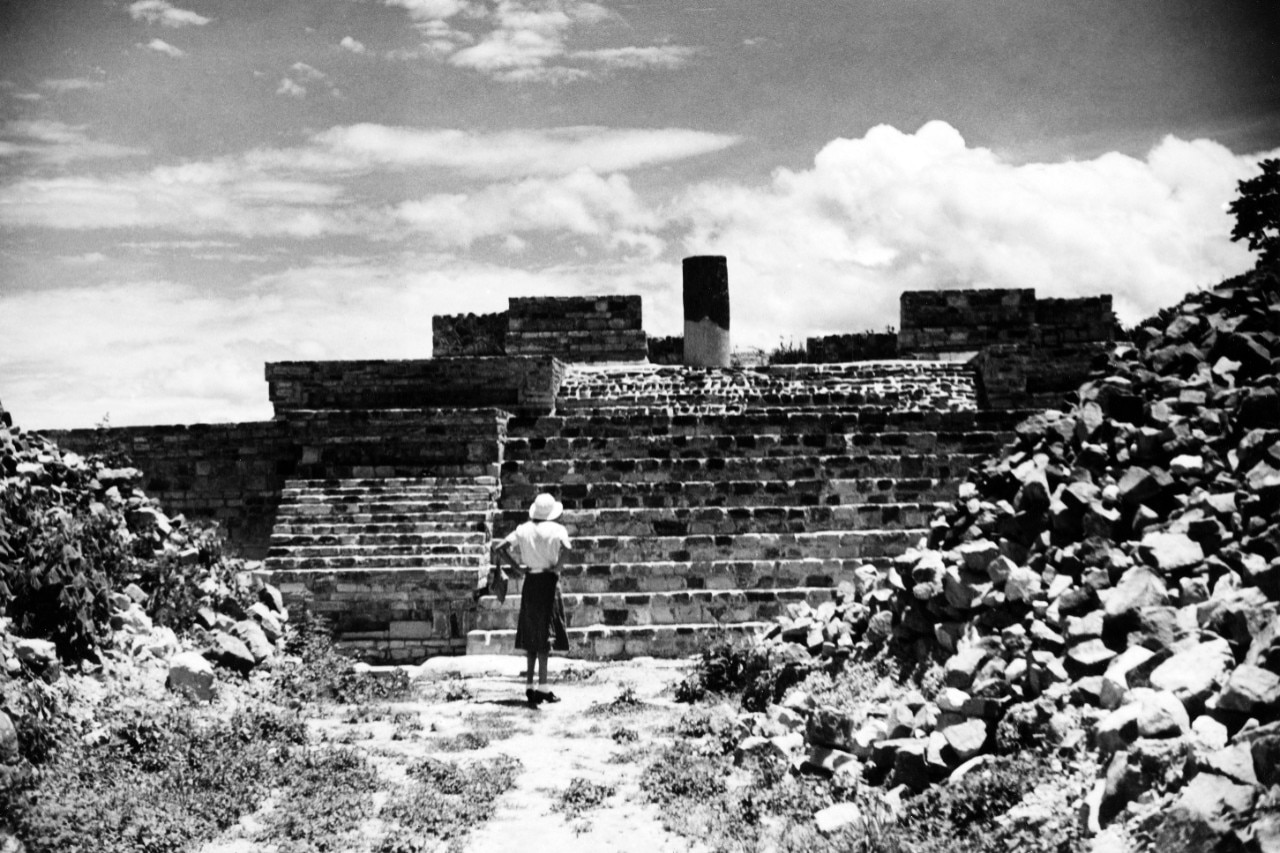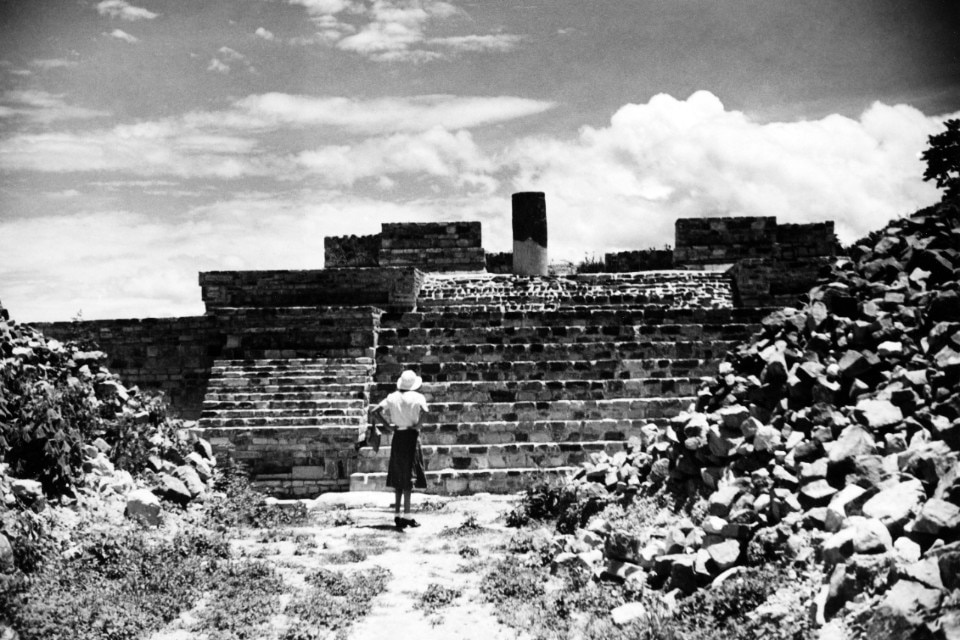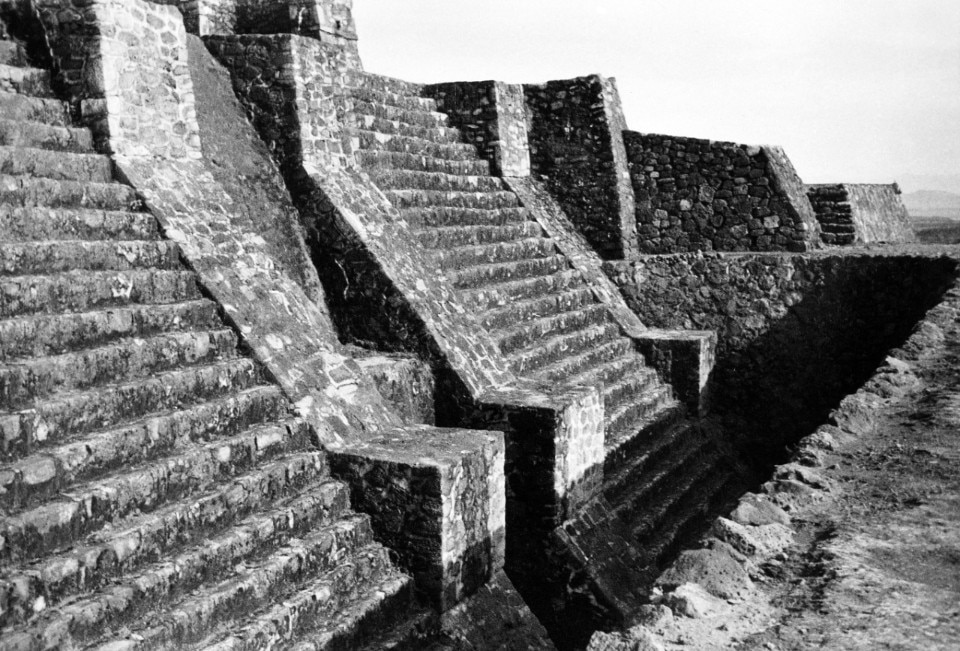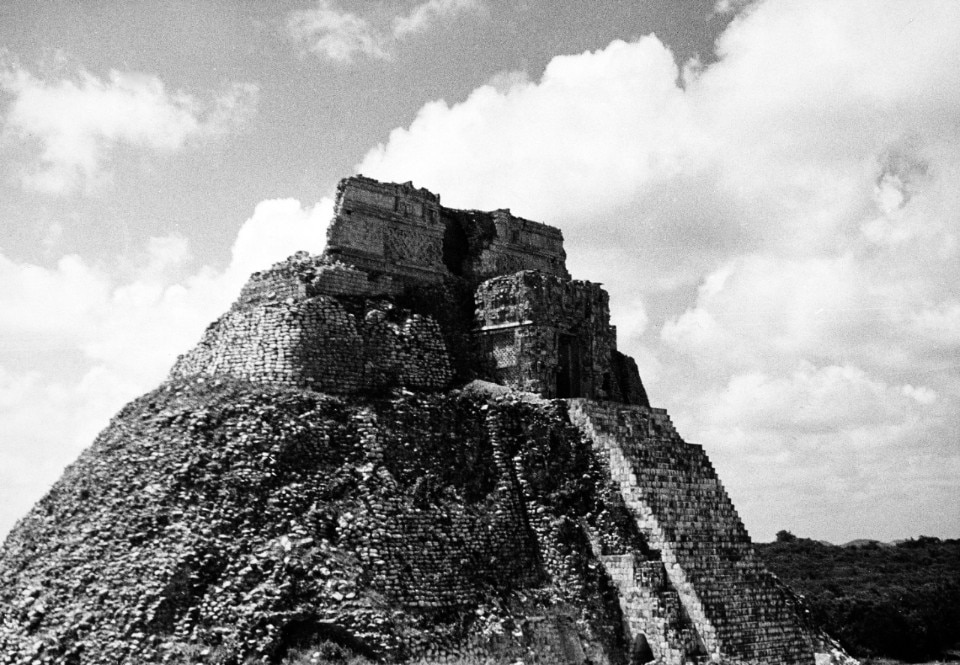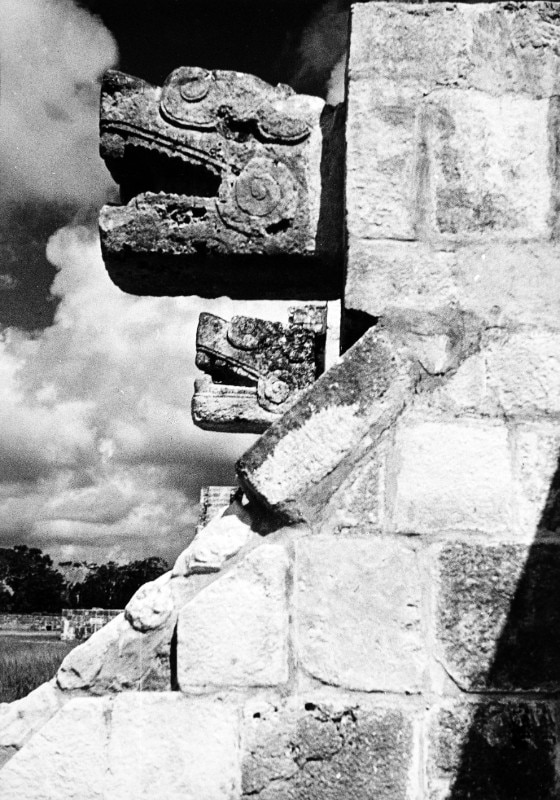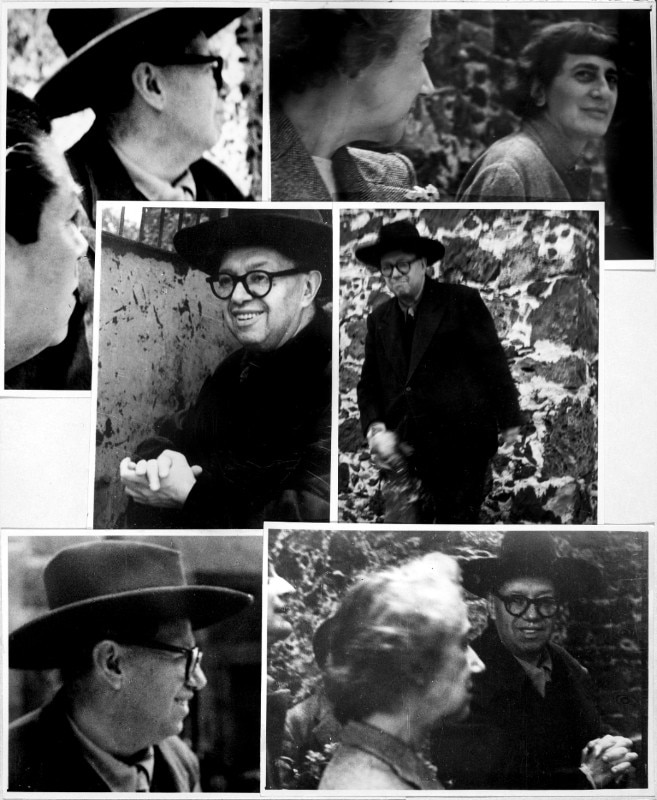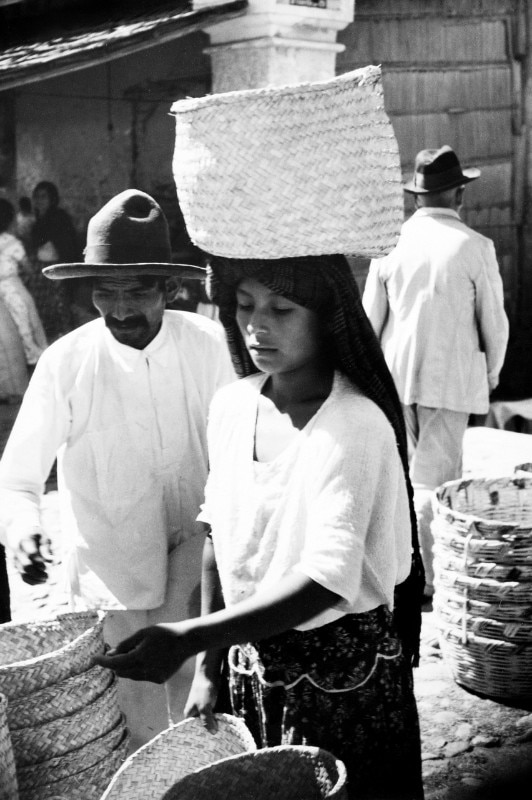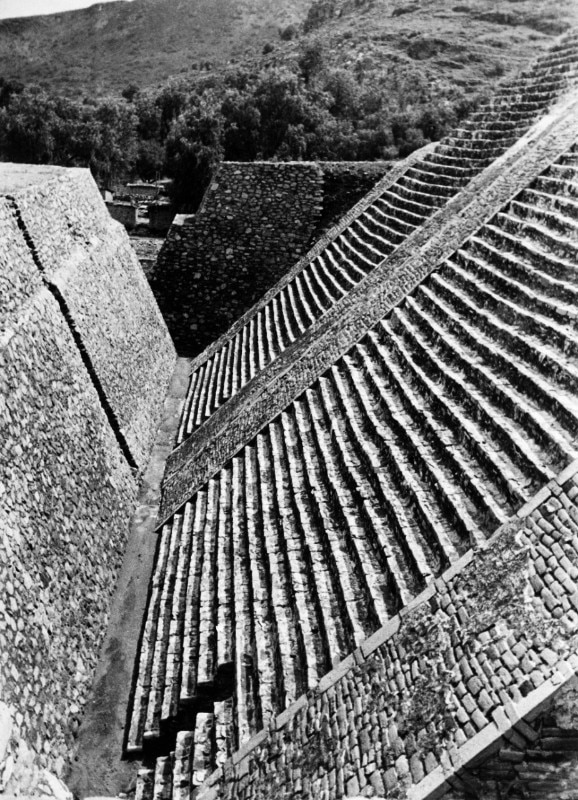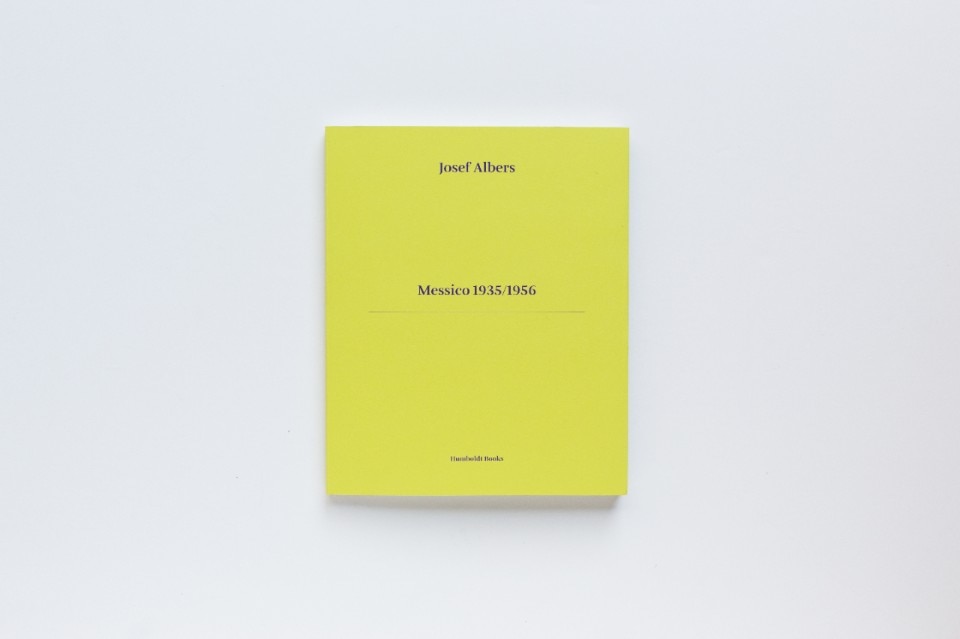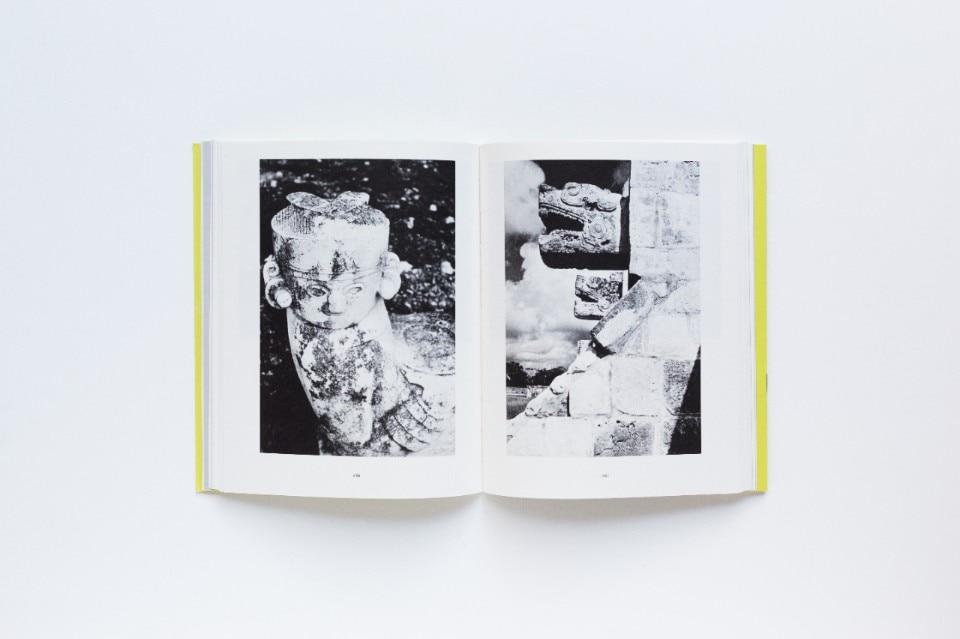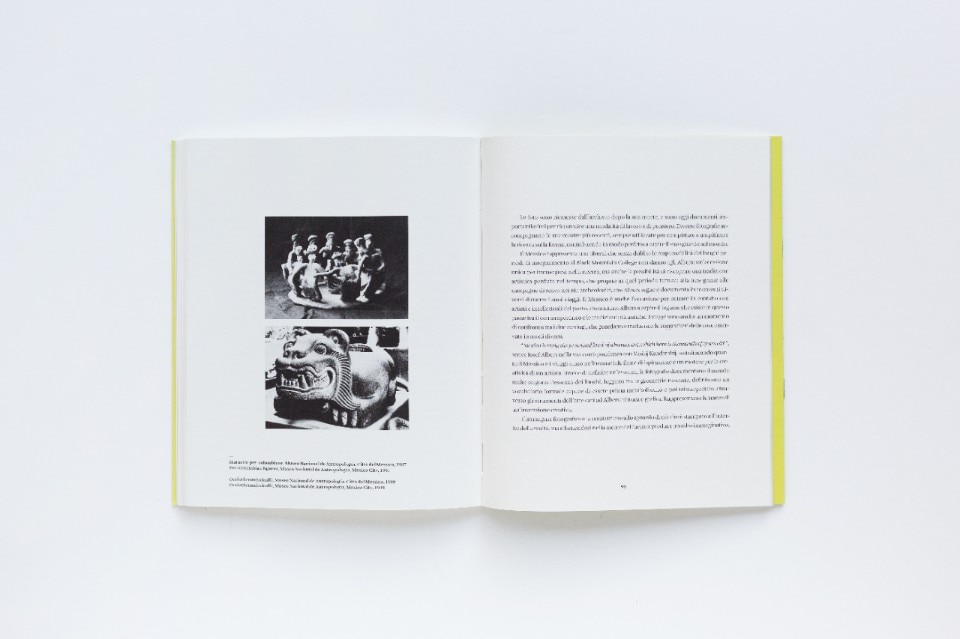Josef Albers started taking photographs during the Bauhaus period, and over the years he used photography both as a teaching tool and as a way to document his trips. Mr. and Mrs. Albers’ trips in Mexico and Latin America took place between 1934 and the summer of 1956, and they were forced to interrupt them only during World War II.
According to Albers, photography is not a way of making art, but rather a method of collecting ideas, taking notes, and a tool for interpreting reality. Over the years, he created different types of photographic works. The photo collages of the Bauhaus period create sequences that produce a cinematic vision of the subject. The photos are mounted on cards of the same dimensions, and they are arranged to convey meaning through the combination of different points of view. No image has been cut or modified – the photos are used in their entirety, never fragmented or manipulated (which perhaps is a way of differentiating himself from Laszlo Moholy-Nagy who, during the Bauhaus period, theorized an artistic use of the new art).
The travel photographs alternate between single shots and combinations with postcards and contacts organized on regular grids, and document Albers’ interest in the places he visited, the local traditions, and the repeated forms. Albers considered these photographs to be something personal, not an artistic expression in itself, but rather a private world capable of engaging and amplifying his imagination. Throughout his life, he never used photographs to accompany his work, and he never thought of organizing an exhibition of his photos. Photography for Albers was something else. The photos re-emerged from the archive after his death, and are now very important pieces of information to reconstruct his way of working and thinking. Several photos accompany his most recent exhibitions, as they have been always used to complete and amplify his research on form, and contribute in a perfect way to understand his gaze on the world.
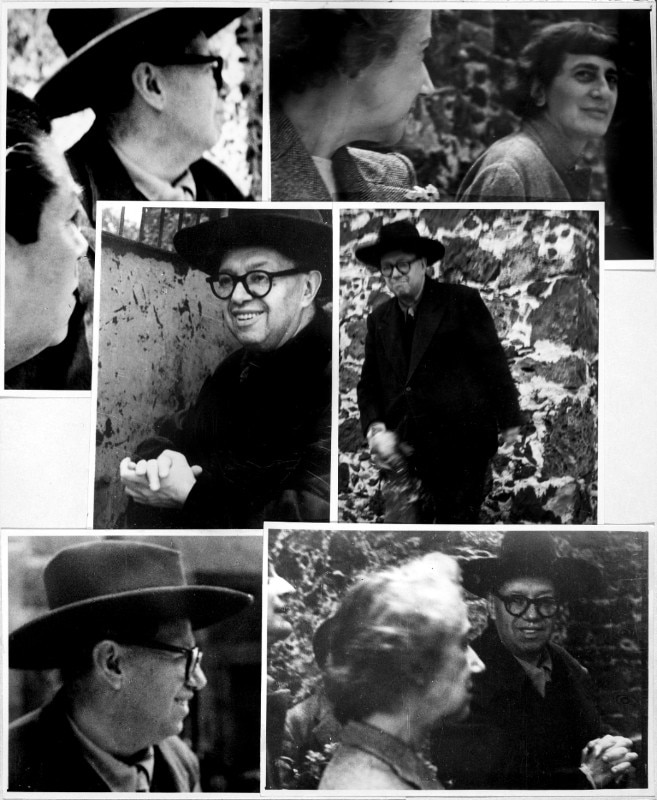
Mexico represents the kind of freedom that Albers did not have during his years of teaching at Black Mountain College, and a unique opportunity to immerse himself in artistic research. But not only that. Mexico also represents the possibility of rediscovering an artistic tradition lost in time, which during that period was coming to light thanks to the excavation campaigns in archaeological sites, which Albers followed and documented during his many trips. Mexico was also an opportunity for him to come into contact with local artists and intellectuals, who helped him understand the link between the contemporary and the most ancient traditions of this country.
Mexico, is truly the promised land of abstract art, which here is thousands of years old
Those trips represented a moment of dialogue for the couple, who observed and translated the suggestions of what they saw in different ways, but always through an artistic approach. “We have had completely marvelous summer here in Mexico, three months in this wonderful country... a place for art as it existed in the past, wonderful ancient art, hardly discovered yet, hardly excavated,” said Anni Albers. “Mexico, is truly the promised land of abstract art, which here is thousands of years old” wrote Josef Albers, who in his letters with Kandinsky emphasized how Mexico and traveling are an inexhaustible source of inspiration for an artist’s creativity.
Rather than defining an aesthetic, the photographs document the real world and capture the essence of places, reveal hidden geometries, and define a formal vocabulary capable of being metabolized and then reinterpreted through Albers’ favorite art tools, namely painting and graphics. They represent the traces of a creative invention. Only some of Albers’ shots attract us by their aesthetics because he prefers the mere documentary value of an image over its seductive use. In this way, the image becomes autonomous enough to create its future. Albers’ images taken at the end of the 1930s, therefore, resist any kind of traditional classification.
Josef and Anni traveled together, and although Josef is the photographer, there are also photos of him, so undoubtedly the material documenting the trips supported the work of both of them. The choice of subjects, therefore, may at times have been the result of a dialogue between the two. As I mentioned earlier, the large archive of photographs is still being studied, and many of the photographs have never been shown to the public. The work must therefore be looked at through the lens of the works made at the same time. In fact, the photographs hide traces of Albers’ art.
The moving lines first crystallize in the artist’s mind and then become unique works of art: just think of Variant/Adobe (1946-1966) and Homage to the Square (1950-1976). The images imprinted in the author’s mind, at least for a given moment, testify to his way of looking at the world. Therefore, the transformation of the artist's gaze is a transformation of his thought.
The images flow, change, pass quickly, and the photographs fix them in a precise space and time, and then when they are developed and selected they become the source of a deeper reflection, transforming themselves into a promise. The overlapping of images and situations allows us to better understand what we are thinking about, and in the case of Albers, what they had been searching for their entire lives.
Albers arrived in Mexico without any specific preparation: he didn’t study the history of the places and he loved to discover them without any imposed superstructure, as he preferred to directly observe the information accumulated indirectly. The photographs themselves provide clear evidence of this method of research through the curiosity of the gaze.
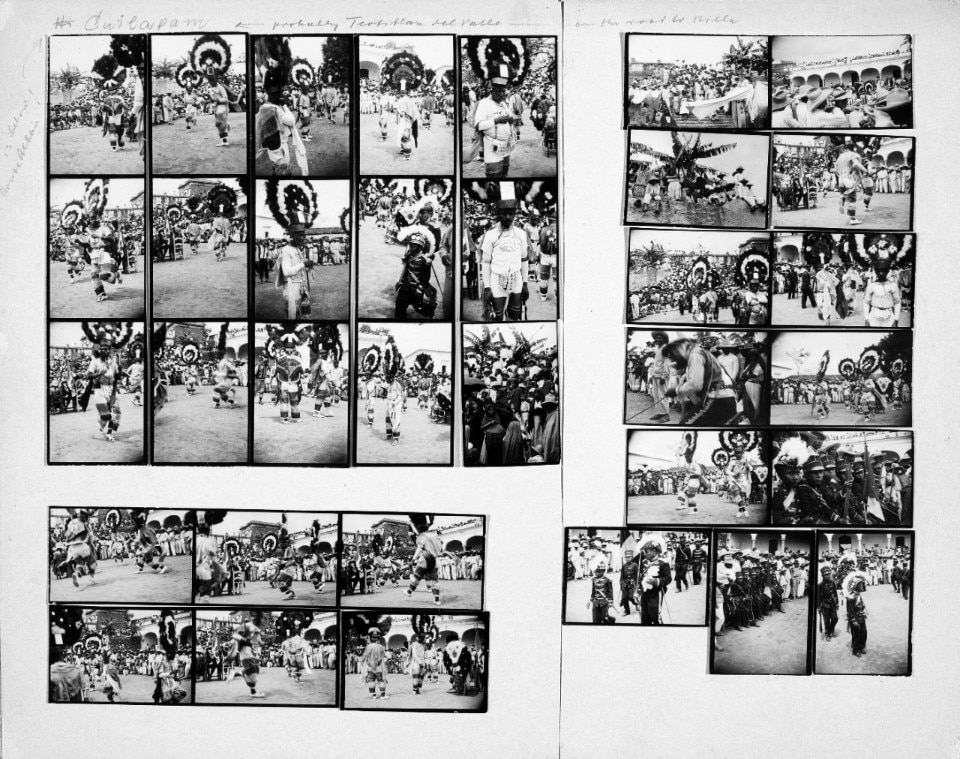
"If art is an essential part of culture and life, then we must no longer educate our students either to be art historians or to be imitators of antiquities, but for artistic seeing, artistic working, and more, for artistic living. Since artistic seeing and artistic living are a deeper seeing and living..." he wrote.
Albers always returned from his travels with a series of local objects that he bought to enrich a sort of archive to be juxtaposed with the photographs and that always overlapped with his representation. The objects always revealed their extreme clarity and functionality through their consistency: stone is stone and clay is clay.
If art is an essential part of culture and life, then we must no longer educate our students either to be art historians or to be imitators of antiquities
Albers was convinced that photography was the instrument of a universal visual language, a very important starting point for communication, and so he writes in his only essay on photography: “The saying that a photo never lies is a lie”. After this statement, he describes with extreme precision the differences that exist between what the eye sees and what the camera manages to capture, emphasizing how understanding this difference is the task of the meticulous photographer. But in reality, Albers seems to be attracted by the possibilities of distorting reality.
In fact, some photos seem to follow this rule on representation, but some others, and the very fact of creating several varieties of montage, seem instead to seek what the eye is not able to capture at a single glance. Photography is a tool of reading and documentation but it is also capable of producing a new vision. This vision is something difficult to represent through the photographic image and is later translated by Albers into a pictorial image. For Albers, photography is not a final product, but a starting point for future works, an archive necessary for his imagination, which collects three-dimensional structures, volumes, textures but also memories of people and places capable of dialoguing with his inner world.


